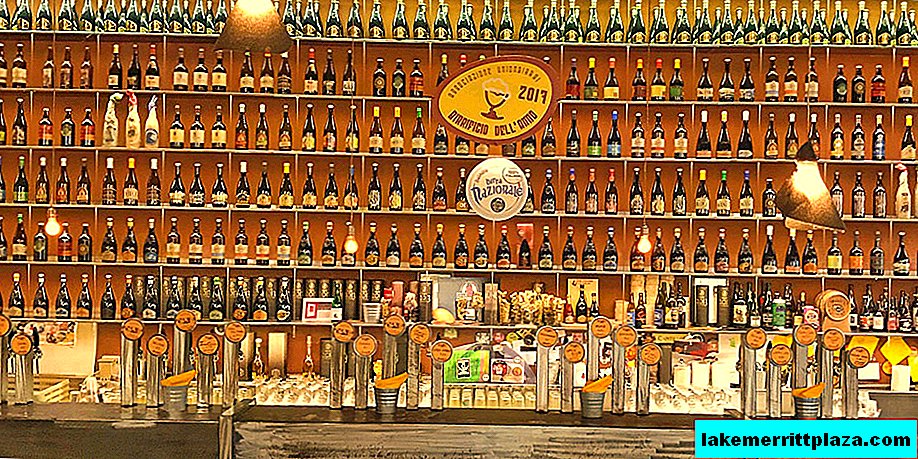The territory of the Biopark is large, but there are few animals, and the park needs repairs. Plants in the zoo create animal comfort and it’s not hot to walk. About 2 hours, without rushing, you can get around everything.

Bioparco di Roma, photo Fabio-Pierboni
Roman Zoo - Bioparco di Roma, located in the northern part of the famous Villa Borghese. It covers an area of 12 hectares.
How the zoo appeared
The zoo in Rome opened on January 5, 1911. Its founder was a Hamburg businessman, an animal trader - Karl Hagenbeck. The classic zoo, which at first served only for the entertainment of the Italian public, was gradually converted into a biopark, equipped in accordance with the new concept. Animals lived there in the most natural conditions: without gratings and cages, on spacious pastures and in open enclosures.
After several years of operation, the commercial success of the zoo began to decline. The leadership tried to improve things by enriching the collection of fauna and expanding the territory. In 1926, a neighboring deer reserve was attached to the zoo's habitat. In 1933, under the leadership of architect Rafaele de Vico, new park structures, aviaries and pavilions were built. Unfortunately, little has been preserved from these buildings at present.

Tiger in the zoo, photo by Angela
With the beginning of the war, a new period of decline began in the activities and management of the park. Only in 1970 were the first attempts at reconstruction made. In 1997, the Roman authorities approved a new development plan for the biopark. The architect James Bessio participated in the implementation of a large-scale architectural and landscape project.

Another cat representative, Drops of Ruby photo
Today’s biopark day
Now more than 1,100 animals live in the biopark: 200 species from five continents - mammals, birds, reptiles, amphibians, fish. The collection contains common, as well as rare and endangered species. Bioparco di Roma is a member of the World Union of Zoos and Aquariums, participates in the Noah's Ark international project, and collaborates with many world organizations in the conservation of animal species.

Entrance to the biopark, photo Bioparco
The entire area of the park is planted with exotic greenery, large tropical trees. Peacocks roam freely along the paths, revealing magnificent tails. In large open spaces, elephants and camels, antelopes and bisons, buffalos, lions, kangaroos live freely.

Biopark Plan
The animal habitat is divided into thematic sections: zones of monkeys and tamarines, armadillos, lemurs; areas of turtles, brown bears. The park has a Chimpanzee Village, Reptile Conservation Center, Giraffe House, Asian Tiger Area, Butterfly Area. Flamingos live on Lake Oasis. In the Large Aviary, built by Rafael de Vico of glass and metal, large birds fly freely. Penguins are kept in a glass enclosure with artificial ice.
A museum of environmental crime has been created in the biopark, which has no analogues in Europe. The museum collection features more than 70 thousand exhibits collected during police operations to combat the illegal trade in animals.
Biopark for children

Bioparco express, photo by Shichiroku
I recommend those with children to visit the biopark. It will be interesting for them to ride around the neighborhood on a fun train with open wagons and watch the animals. And then you can have a fun photo shoot. Imagine yourself as different animals, sticking his head out in a hole in the stand, which depicts some kind of animal. Also, kids are happy to go to the children's farm with pets. Here you can pet and feed the sheep, cows, donkeys.

At a home farm, photo by Barbara Cesanelli

Pets, photo by Barbara Cesanelli

You can stroke the sheep, photo Valentina Storti
At the amusement and games venue L'Arca della Conservazione, visitors to the biopark are waiting for slides, swings, carousels. It also hosts exhibitions, performances, educational programs, children's birthdays. The schedule of events is presented on the website of the Roman Biopark.
Biopark Hours
| from January 1 to March 23 | 9:30 - 17:00 |
| from March 24 to October 28 | 9:30 - 18:00 |
| from October 29 to December 31 | 9:30 - 17:00 |
The zoo is open daily, seven days a week, with the exception of Christmas.
From March 24 to September 30 on Saturday, Sunday and holidays, the working time increases until 19:00.
Entry tickets
| adult | € 16 |
| children up to 1 m | is free |
| children from 1 m to 10 years old | € 13 |
| Bioparco express | € 1.50 |

In the biopark, photo beba_1974
How to get there
Take the MEA metro to Flaminio or Spagna Station;
by tram 2, 3, 19 or by bus No. 11 and 910 to the Rossini-Bioparco stop;
by buses 52, 223, 910 to the stop Bioparco- Mercadante.
How do I save on hotels?
Everything is very simple - look not only at the booking. I prefer the search engine RoomGuru. He is looking for discounts at the same time on Booking and on 70 other booking sites.








